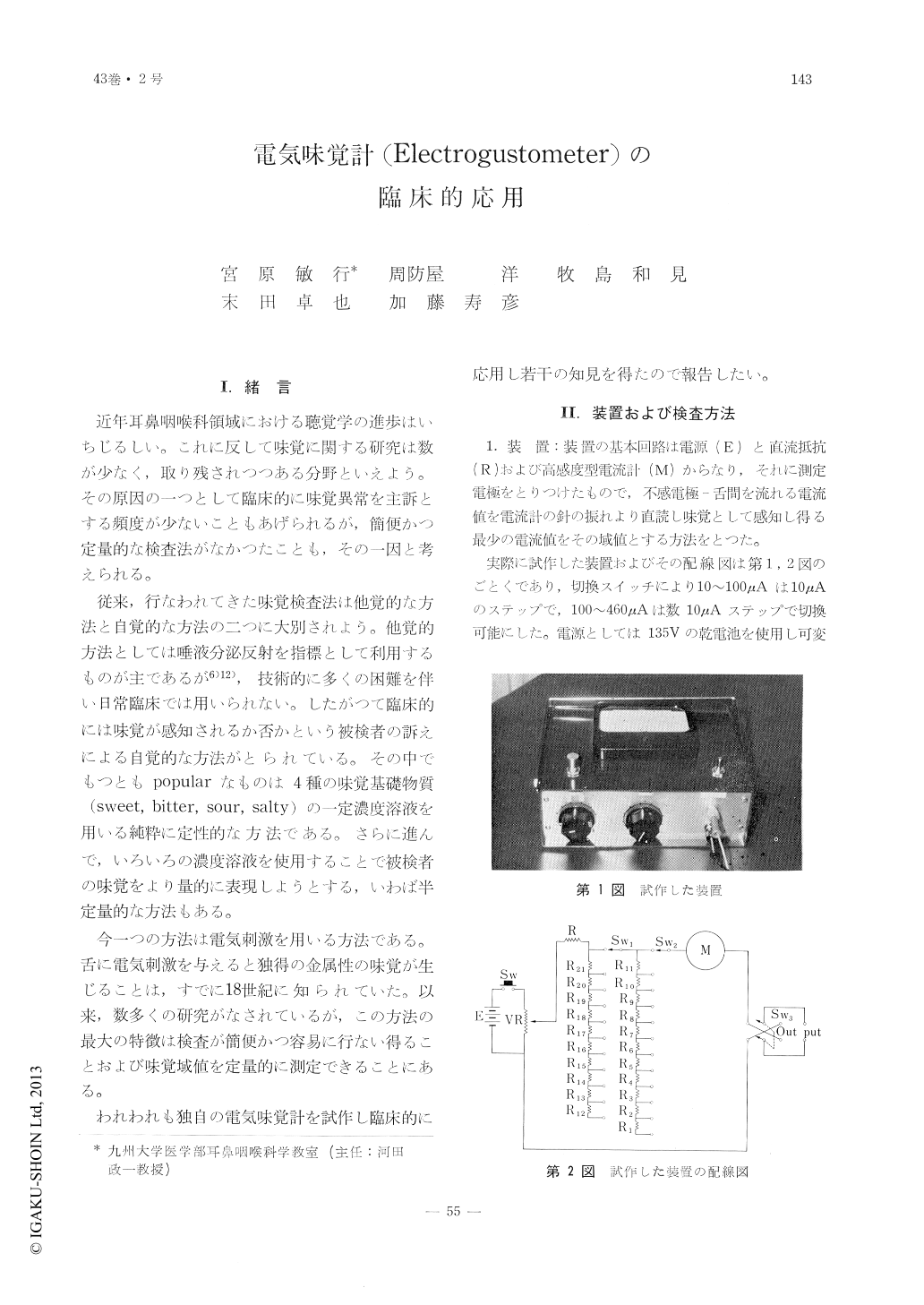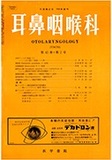Japanese
English
- 有料閲覧
- Abstract 文献概要
- 1ページ目 Look Inside
Ⅰ.緒言
近年耳鼻咽喉科領域における聴覚学の進歩はいちじるしい。これに反して味覚に関する研究は数が少なく,取り残されつつある分野といえよう。その原因の一つとして臨床的に味覚異常を主訴とする頻度が少ないこともあげられるが,簡便かつ定量的な検査法がなかつたことも,その一因と考えられる。
従来,行なわれてきた味覚検査法は他覚的な方法と自覚的な方法の二つに大別されよう。他覚的方法としては唾液分泌反射を指標として利用するものが主であるが6)12),技術的に多くの困難を伴い日常臨床では用いられない。したがつて臨床的には味覚が感知されるか否かという被検者の訴えによる自覚的な方法がとられている。その中でもつともpopularなものは4種の味覚基礎物質(sweet, bitter, sour, salty)の一定濃度溶液を用いる純粋に定性的な方法である。さらに進んで,いろいろの濃度溶液を使用することで被検者の味覚をより量的に表現しようとする,いわば半定量的な方法もある。
Since the advent of the electrogustometer (modified Krarups apparatus) was made quan-itative measurement of taste is, now, possible. The results obtained from these measurements are as follow:
1. In the examination of 120 normal persons whose ages ranging from 13 to 75, the taste threshould appeared to be increased with age advance. No significant threshold difference was found between the right and left sides of the tongue.
2. When the chorda tympani nerve is sectioned on one side, no sensation was left on the corresponding side of the tongue until the stimulating current is increased to 300μA.
3. From these results the author considers the normal limit as being set at 70μA, between 70 and 300μA as hypoageusia and over 300μA as ageusia.
4. However, it appeared to be an impossibi lity in obtaining any valuable information con cerning the prognosis on Bell's palsy based on the results of taste determinations.

Copyright © 1971, Igaku-Shoin Ltd. All rights reserved.


